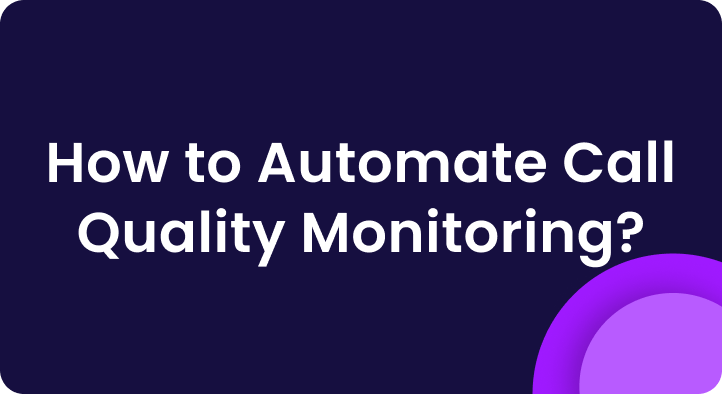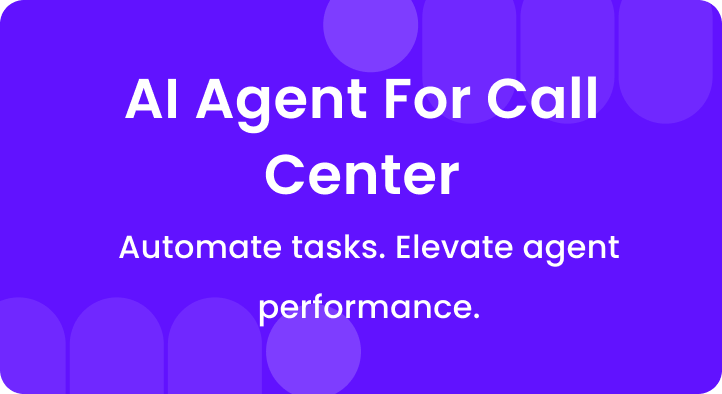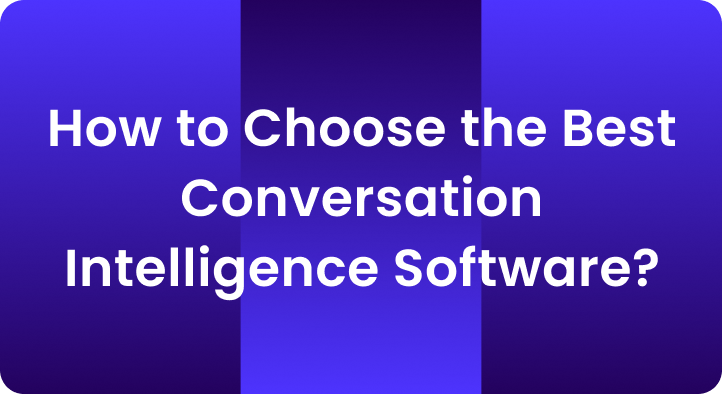If you’re still relying on call recordings and manual reviews to understand what’s happening on customer calls, you’re missing the bigger picture.
In 2025, AI-powered call analytics tools are not just nice to have. They are essential.
They help you capture insights from every conversation, track performance trends, monitor compliance, and spot issues before they lead to churn or legal risk.
But with dozens of platforms out there, which ones actually deliver? Here’s a look at the best AI call analytics tools for businesses in 2025 and what makes each one stand out.
1. Enthu.AI
Best for: Contact centers that want coaching-ready insights, not just data
Enthu.AI focuses on turning every conversation into a coaching opportunity.
It analyzes customer interactions and auto-generates call scorecards, tracks agent performance trends, flags compliance misses, and helps QA managers pinpoint coachable moments quickly.
What sets it apart:
- Built-in call scoring and coaching workflows
- No-code scorecard setup
- Red alerts on risky calls or missed phrases
- Designed for small and mid-sized teams to scale QA efficiently
- Fast onboarding with minimal IT support
Why businesses love it: It doesn’t just give you analytics. It gives you clear, coaching-ready takeaways you can act on right away.
2. Gong
Best for: Sales teams focused on pipeline and rep performance
Gong is widely used in B2B sales organizations.
It captures sales calls and analyzes them for talk ratios, deal risks, competitor mentions, and sales methodology adherence.
While it’s more sales-focused than support, many hybrid teams use it for coaching and insights.
Key features:
- Revenue intelligence based on call data
- Deal tracking and forecasting
- Sales playbook alignment
- Conversation scorecards
Why it’s strong in 2025: Gong continues to lead in applying AI to sales team performance and deal coaching, especially in complex enterprise environments.
3. Observe.AI
Best for: Enterprise contact centers needing deep analytics and compliance tracking
Observe.AI offers full-scale interaction analytics with powerful tools for transcription, sentiment analysis, and agent performance tracking.
It’s designed for large-scale QA teams that need high accuracy and detailed reporting.
Key strengths:
- Real-time transcription with high accuracy
- Deep sentiment and behavioral analysis
- Integrates with major CCaaS and CRM platforms
- Workflow tools for evaluations and coaching
- Best for teams with strict regulatory needs or large QA volumes.
4. CallMiner Eureka
Best for: Organizations focused on deep voice-of-the-customer analytics
CallMiner is known for its in-depth voice and text analytics engine. It’s ideal for businesses that want to go beyond agent performance and understand customer intent, emotion, and loyalty trends.
Highlights:
- Voice of customer analytics
- Custom scoring models
- Predictive alerts
- Real-time agent guidance is available in some tiers
Why choose it: You get both agent-focused insights and customer experience-level intelligence to drive business decisions across departments.
5. Chorus by ZoomInfo
Best for: Sales teams that want AI-powered conversation intelligence tied to the pipeline
Chorus offers similar capabilities to Gong, with deep integration into sales workflows.
It analyzes sales calls for key themes, rep performance, and deal progress.
Now part of ZoomInfo, it is tightly connected to go-to-market planning and CRM data.
Notable features:
- Sales coaching suggestions
- Talk and listen ratio tracking
- CRM integration
- Deal trend dashboards
Best for B2B sales teams that want insights connected directly to revenue performance.
6. Balto
Best for: Real-time agent guidance during live calls
Balto stands out because it doesn’t just analyze calls after they happen.
It provides live feedback and guidance while the agent is on the call.
It listens in real time and offers on-screen coaching prompts, script support, and compliance checks.
Top features:
- Live coaching cards
- Compliance monitoring during calls
- Dynamic scripting suggestions
- Performance dashboards for supervisors
Best for teams that want to reduce average handle time, boost conversion, or maintain compliance in real time.
7. Invoca
Best for: Marketing teams that want insight from inbound phone calls
Invoca uses AI to understand what happens during marketing-driven calls.
It connects call insights to campaign performance, helping teams see which ads or channels are driving quality leads.
Key features:
- Call attribution and campaign tracking
- AI-powered keyword tagging
- Revenue-based call scoring
- Conversion optimization analytics
Perfect for businesses that rely heavily on phone calls from ads and want to tie those directly to ROI.
How to Choose the Right Tool for Your Business?
Not every business needs the same AI features. Here are a few key things to consider before choosing.
Sales vs. Support Focus
Gong and Chorus are best for sales-heavy environments. Enthu.AI, Observe.AI, and CallMiner are better for support, service, and QA teams.
Team Size and Resources
Small to mid-sized teams benefit from tools with fast onboarding and minimal setup. Enthu.AI and Balto are known for being easier to deploy.
Compliance and Risk Sensitivity
If you’re in lending, insurance, or healthcare, choose a tool with strong compliance monitoring. Observe.AI, Balto, and Enthu.AI are strong picks here.
Real-time vs. Post-call Analytics
Balto offers real-time feedback during the call. The others focus on post-call analysis, which is still powerful but better for coaching after the fact.
Coaching and QA Workflow Support
If your goal is to build a strong coaching culture, look for tools that offer integrated QA scorecards, tagging, and coaching flows. Enthu.AI and Observe.AI lead in this area.
Final Thoughts
In 2025, AI call analytics is no longer just about reviewing calls faster. It is about unlocking business insights, driving better coaching, improving customer experience, and reducing risk.
The right platform depends on your goals. Whether you’re managing a contact center, building a sales team, or tracking marketing calls, there is a tool built for you.
Choose the one that helps you do more than listen. Choose the one that helps you act.



